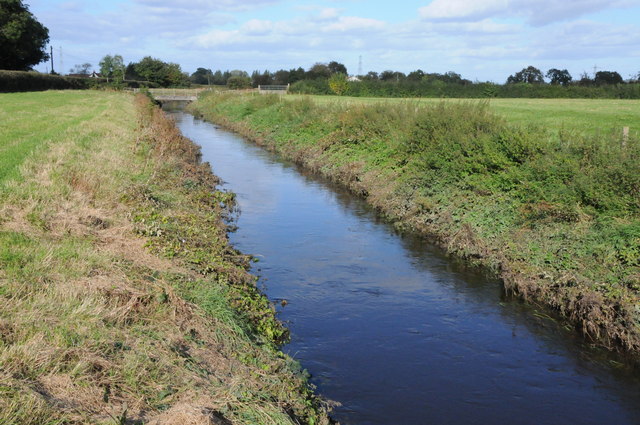Hi, welcome to this blog on Drainage System, types of drainage in agriculture.
Table Of Contents
- What is drainage
- Importance of drainage
- Types of drainage System
- Advantages of drainage
- Effects of drainage system
WHAT IS DRAINAGE
Definition: Drainage is a process whereby excess water in the soil is removed artificially to promote good farming activities. In other words, drainage is the withdrawal of excess water from the soil while at the same time retaining adequate reserves to carry the crop through the period of scarcity.
THE IMPORTANCE OF DRAINAGE
The reasons and effects of drainage in agricultural land include the following;
- Drainage helps reclaiming waterlogged soil for crop production.
- Drainage improve the soil structure thereby improving the water holding capacity of the soil.
- It improves soil aeration for good root respiration.
- It gives suitable condition for the growth of soil microbes responsible for the decomposition of soil organic matter which provide nutrients for plant growth.
- It helps to increase the soil temperature for the benefit of crop plants.
- Drainage also leaches excess salt from soil thereby preventing the death of plant arising from poisoning.
- It makes tillage operation easier.
- It reduces the incidence of crop diseases.
- It enhances harvesting of crops, especially swamp rice.
- Drainage makes land preparation easier.
- It increases the soil temperature.
- drainage reducing soil salinity.
- It enhances early planting of crops.
- It reduces soil acidity.
- It increases crop production.
- It makes the soil workable or light.

TYPES OF DRAINAGE
DRAINAGE SYSTEMS: There are two major systems or types of drainage, these are: the surface and subsurface (underground) drainage.
SURFACE DRAINAGE: This types of drainage Involves the orderly removal of excess water artificially from the surface of the Land or soil using constructed open ditches, fields drains and land grading. Open ditches and ensures easy evacuation of excess water from the farm land or soil.
Advantages of surface drainage
- It is relatively easy to construct.
- it is cheaper than the subsurface drainage system.
Disadvantages of surface drainage
- It occupies good land (space) that could have been used for planting.
- They are prone to gully erosion.
- They hinder the passage of machines like tractors.
- It requires frequent maintenance.
- Farm mechanization is impaired.
- It increases the cost of crop production.
- It is expensive and difficult to establish.
- It makes the farm more prone to hazards. E.g falling into an open drain.
SUB-SURFACE/UNDERGROUND DRAINAGE: This types of drainage is the orderly removal of excess water from the land or soil using tiles or moles or perforated pipes under the ground. This collect water and channel it’s away from the farmland.
Advantages of Sub-Surface drainage
- It does not pose any threat to machines.
- High value crops are grown.
- Drainage is faster and more efficient.
- Cost of maintenance is low.
- More land is made available for cultivation.
- Soil is hard in place so that it would not damage drainage pipes.
- It leaves the field free from surface obstructions.
Disadvantages of Sub-Surface drainage
- It cannot be easily constructed.
- It is very expensive to operate.
- It needs very deep excavation of the Soil
- And it is difficult to maintain.
Read on to irrigation and types of irrigation on my next article.
EFFECTS OF DRAINAGE
- Flood Prevention: Effective drainage helps prevent flooding by directing excess water away from low-lying areas.
- Erosion Control: Drainage systems can reduce soil erosion by managing water runoff and preventing the washing away of topsoil.
- Improved Agriculture: Adequate drainage enhances soil aeration, reduces waterlogging, and promotes healthier plant growth in agriculture.
- Infrastructure Protection: Drainage safeguards roads, buildings, and other infrastructure from water damage, especially during heavy rainfall.
- Health and Sanitation: Proper drainage minimizes stagnant water, decreasing the risk of waterborne diseases and supporting overall public health.
- Environmental Conservation: Well-managed drainage contributes to environmental conservation by preventing soil and water pollution.
- Urban Planning: Proper drainage is essential in urban areas to manage stormwater runoff and prevent urban flooding. It plays a critical role in city planning and infrastructure development.
- Groundwater Recharge: Well-designed drainage systems can contribute to groundwater recharge by allowing water to percolate into the ground, replenishing underground aquifers.
- Land Use and Development: Drainage considerations influence land use planning and development. It is a key factor in determining the suitability of areas for construction and other activities.
- Water Quality: Proper drainage helps maintain water quality by reducing the risk of pollutants entering water bodies. It prevents contaminants from washing into rivers, lakes, or oceans.
In conclusion: The effects of drainage are multifaceted, influencing various aspects of the environment, infrastructure, and human well-being.
Revision Questions
- What is drainage?
- List 5 important of drainage in agriculture.
- State six effects of drainage system
- What are the two major types of drainage system in agriculture?
- Briefly Explain the surface drainage system and it’s advantages.

I am really enjoying this program , thanks for the update , Jazakunlah Hairan.